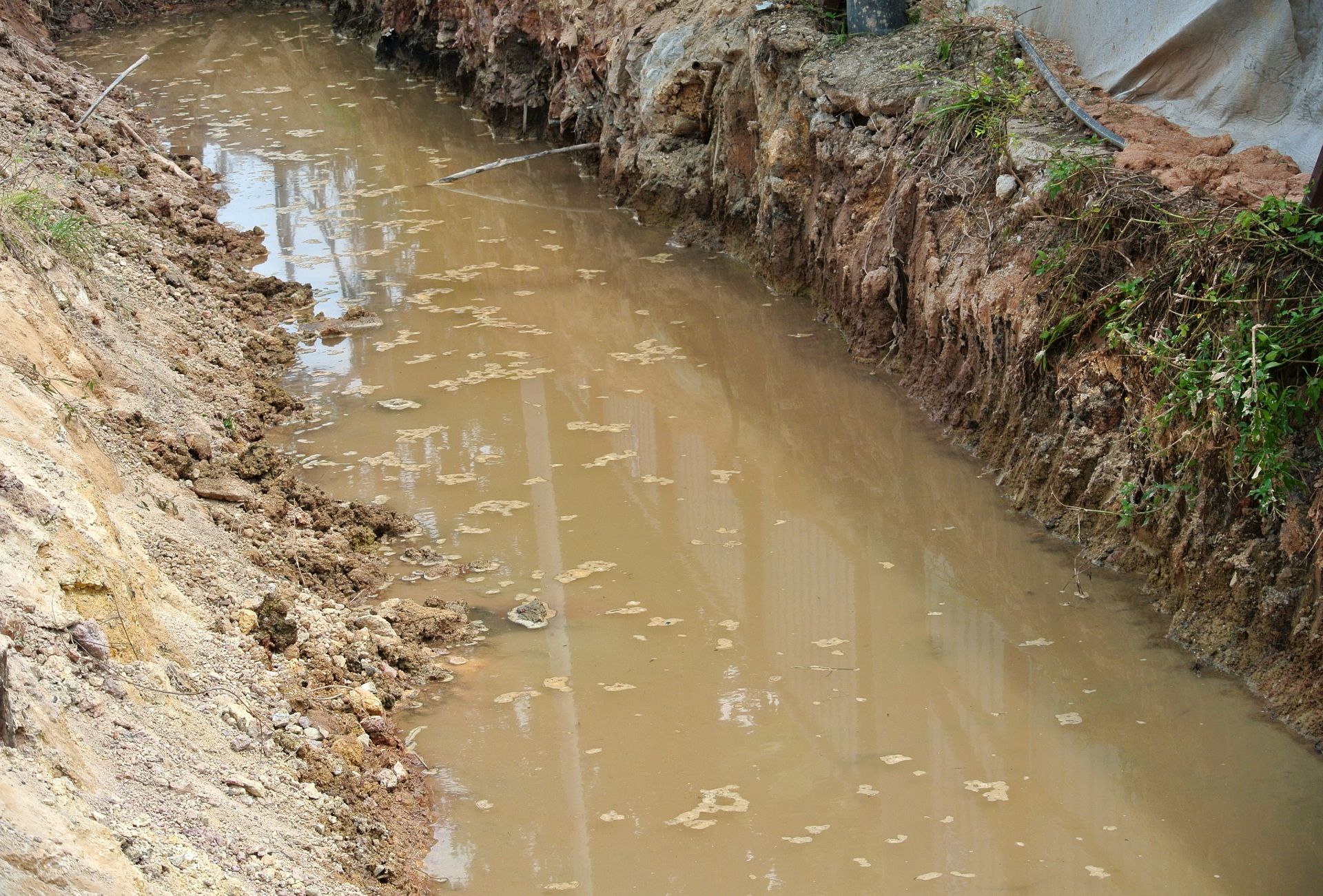Stormwater runoff pollution is a significant environmental concern, especially on construction sites where land disturbance can result in erosion and releasing harmful contaminants into waterways.
Due to these concerns, federal law requires stormwater pollution prevention plans (SWPPP) to acquire NPDES permits for construction sites that disturb more than an acre of land.
Nevertheless, site managers can help minimize the environmental impact of stormwater runoff by educating themselves on the causes of stormwater pollution.
This guide will outline the common sources of stormwater runoff pollution and the importance of developing a SWPPP to prevent these concerns.
The Dangers of Stormwater Runoff Pollution
Stormwater runoff can greatly disturb local soils, especially when mixed with waste materials found on construction sites. Some negative impacts of stormwater runoff pollution may result in:
- Pollution of Local Water Sources: Toxic materials, such as those discussed below, can wreak havoc on local aquatic ecosystems, potentially poisoning and depriving organisms of the necessary oxygen to survive.
- Erosion: Excess runoff that is not adequately controlled can lead to erosion of native soils and sedimentation, which is a pollution source. Over time, this will disturb local ecosystems and make it harder to revitalize disturbed soils.
- Turbidity: Sediment-laden runoff can increase water turbidity, making it cloudy and reducing sunlight penetration. This can disrupt aquatic ecosystems, interfere with fish habitats, and hinder the growth of aquatic vegetation.
By identifying the sources of stormwater runoff pollution, site managers can devise a plan to protect local ecosystems from its negative effects.
Sources of Stormwater Runoff Pollution
Below is a list of common stormwater runoff pollution sources that can be harmful to surrounding ecosystems if exposed to these sources.
Sediment
One of the primary concerns of erosion is sedimentation or the displacement of loose sediment particles. While sediment is not inherently toxic, it can lead to increased turbidity, which blocks out sunlight and harms aquatic life. Erecting erosion and sediment controls is an essential step in controlling stormwater runoff pollution at any construction site.
Microorganisms
Construction sites may harbor microorganisms such as bacteria, viruses, and parasites, which can be washed into water bodies through stormwater runoff. Certain bacteria, such as Cryptosporidium, which comes from animal waste, are one of the most dangerous pollutants found on urban construction sites that often find their way into rivers and lakes.
Nutrients
Fertilizers, pesticides, and other chemicals used on construction sites can contain nutrients such as nitrogen and phosphorus that are harmful to fish and certain plants. For example, these nutrients can contribute to algal blooms and eutrophication in water bodies, leading to oxygen depletion and fish kills.
Heavy Metals
Construction activities often involve using materials containing heavy metals such as lead, copper, and zinc. Unfortunately, runoff from construction sites can carry these metals into water bodies, accumulating in sediments and posing lethal risks to aquatic life.
“Oxygen-Demanding” Wastes
A little-talked-about pollution source found on construction sites could be your everyday organic matter, such as leaves and grass clippings. The problem with these waste products is that they deplete oxygen from water as they decompose, starving aquatic life of the compounds it needs for survival.
Toxic Chemicals
Finally, hazardous chemicals can be found everywhere on construction sites, from building materials, such as stucco and paint, to grease and oil used in construction equipment. Mixing these chemicals with stormwater runoff can be a lethal cocktail for any animal or organism that consumes this pollution-laden water.
How SWPPPs Prevent Runoff
Luckily, many of the best management practices (BMPs) or controls outlined in your stormwater pollution prevention plan (SWPPP) can effectively manage and control all these pollution sources simultaneously. Common BMPs used on worksites include silt fences, sediment traps, erosion control blankets, and storm inlet drains, all of which slow the velocity of stormwater runoff and filter out harmful pollutants.
Site managers must also identify all potential sources of pollution and areas on a site that are most vulnerable to erosion and sedimentation to create specific controls that prevent runoff of dangerous materials and excess erosion.
One of the most important aspects of a SWPPP is the inclusion of training procedures that ensure all employees follow proper waste management practices and erosion control BMPS,
Stormwater runoff pollution from construction sites poses significant risks to the environment and public health. By identifying and addressing sources of pollution, implementing BMPs outlined in SWPPPs, and promoting environmental stewardship, construction site operators can minimize the impact of stormwater runoff pollution and protect water resources for future generations.
FAQs: Stormwater Pollution Sources
Why is stormwater runoff pollution a concern on construction sites?
Stormwater runoff pollution from construction sites can lead to environmental damage, including erosion, sedimentation, turbidity, and contamination of water bodies. This poses risks to aquatic habitats, public health, and water quality.
What are some common sources of stormwater runoff pollution on construction sites?
Common sources of stormwater runoff pollution on construction sites include sediment, microorganisms, nutrients, heavy metals, “oxygen-demanding” wastes, and toxic chemicals such as oils and grease.
How do Stormwater Pollution Prevention Plans (SWPPPs) help prevent runoff pollution?
SWPPPs outline best management practices (BMPs) and pollution prevention measures to be implemented on construction sites to minimize stormwater runoff pollution. These measures include erosion and sediment control, pollution prevention practices, stormwater management, and employee training and education.
Are SWPPPs required for all construction projects?
SWPPPs are typically required for construction projects that disturb one or more acres of land or are part of a larger common development plan. However, local regulations may vary, so it’s important to check with regulatory authorities to determine specific requirements for SWPPPs based on the size and scope of the project.

